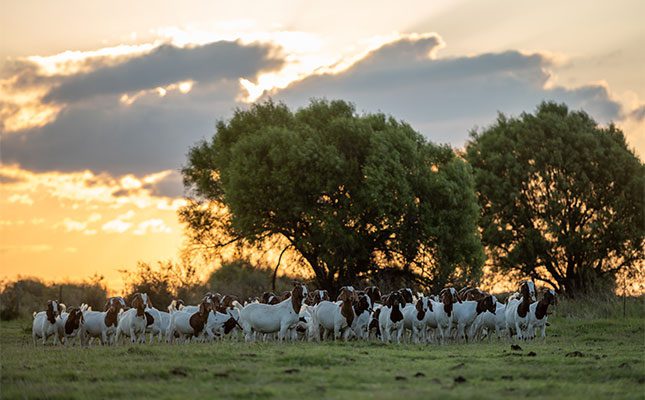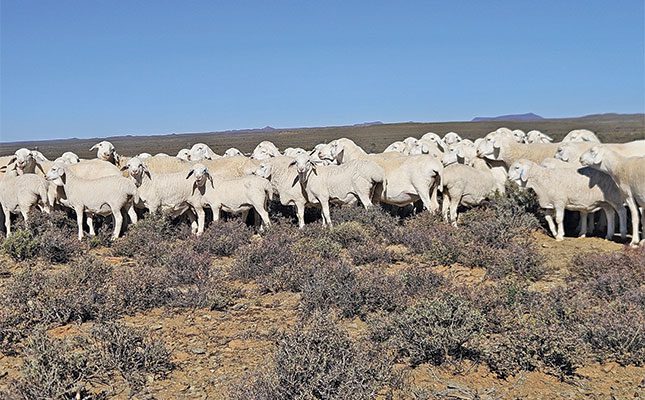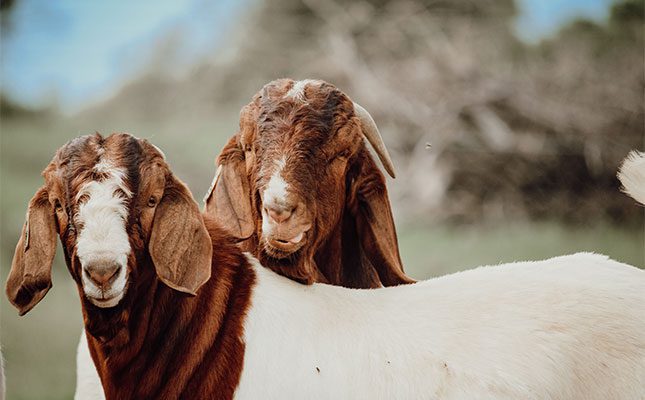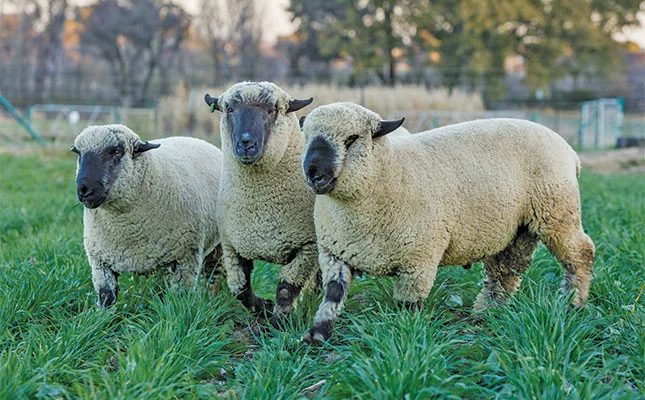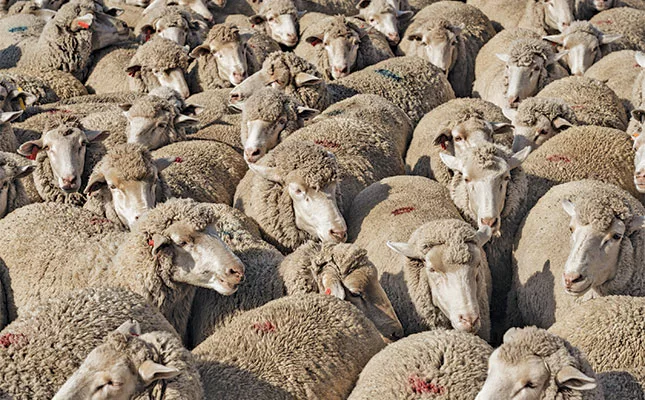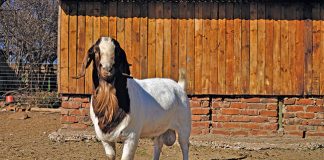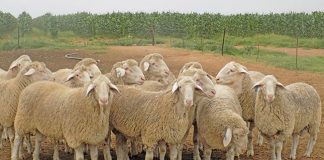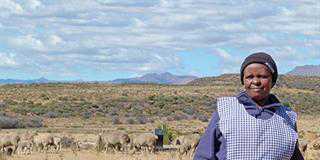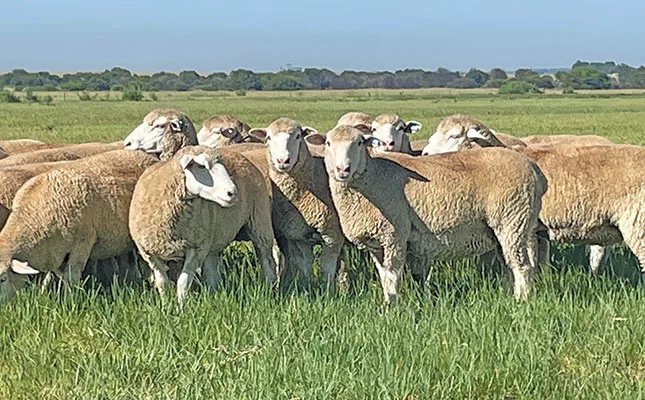
Photo: Supplied
South Africa’s small-stock sector is highly competitive, driven by increasing demand for efficient meat production and profitability. Among the breeds available, Dormer sheep have established themselves as a reliable and productive choice for commercial meat producers.
Known for their rapid growth, excellent carcass qualities and broad adaptability, Dormers continue to support farmers across diverse environments and management systems.
Speaking to Farmer’s Weekly, Dr Mariëtte Geyser, senior lecturer in Agricultural Economics at North-West University and an active Dormer breeder in the Viljoenskroon district, shares her experience on why the Dormer is her preferred breed.
“You need to farm with what works for you and, for me, it’s about efficient meat production. Dormers provide a consistent, practical and economical option that aligns well with my farming goals,” she says.
Historical background and breed development
According to Geyser, the Dormer was developed in the early 20th century during a period when South African wool producers faced declining wool prices and sought to diversify income sources. At the Elsenburg College of Agriculture in the Western Cape, researchers aimed to produce a terminal sire that could be used on Merino ewes to improve meat production without sacrificing wool yield.
She adds that the solution came through crossing Dorset Horn rams, known for their meat qualities and easy lambing, with German Merino ewes, valued for their fine wool and hardiness. The resulting breed combined the desirable traits of both parents: rapid growth rates, substantial muscling and a wool coat suitable for South African conditions.
“The Dormer gave Merino producers a competitive edge by allowing them to produce lambs with better meat characteristics, while maintaining wool production. That dual-purpose approach was innovative at the time and remains relevant today,” Geyser says.
Conformation and physical traits
According to Geyser, Dormer possess a distinctive appearance, with white faces and dense wool covering most of the body, including the legs. Their frame is generally well balanced, with strong front ends, broad backs and firm legs all contributing to soundness and longevity.
Muscling is a hallmark of the breed, with well-developed hindquarters that translate into high carcass yields. Though Dormers may appear smaller than some specialised meat breeds, their carcass weights and conformation often exceed expectations once dressed.
Growth and production performance
Growth efficiency is a key selling point for Dormers. Lambs typically achieve rapid early growth, reaching marketable weights much faster than many other breeds. Under optimal feeding conditions, weaning weights can exceed 30kg within 60 days, with average daily gains of 400g or more during feedlot finishing.
Geyser’s farm demonstrates these performance benchmarks: “I usually sell my lambs at weaning, but when market conditions favour it, I take them through the feedlot.
“The gains I observe over 400g per day are excellent and support profitability,” she says.
Feed conversion efficiency is another factor. Dormer lambs thrive on a mix of veld grazing and supplementary feed, efficiently converting intake into muscle and fat. This trait reduces input costs and shortens finishing periods, critical aspects for commercial operations facing tight margins.
Maternal ability and reproductive efficiency
Dormers are also valued for their strong maternal traits, which include high fertility, good milk production and attentive mothering behaviour. These qualities help reduce lamb mortality and improve overall flock productivity.
“In my experience, Dormer ewes are dependable mothers, even under extensive grazing systems. Their natural mothering instincts ensure lambs get adequate nutrition and protection during vulnerable early weeks,” Geyser says.
Fertility rates are consistently high. Geyser further mentions lambing percentages are around 150% under natural mating, with some producers achieving even higher rates through improved nutrition and management. Multiple births, including twins and triplets, are common.
“One year, I had a ewe wean over 110kg from triplets. It’s a clear demonstration of the breed’s capacity, especially when combined with good management practices,” she comments.
Adaptability across South Africa’s diverse climates
Although originally bred in the Western Cape’s cool and wet environment, Dormers have adapted to thrive throughout South Africa’s varied climates.
From the semi-arid Free State to the humid KwaZulu-Natal Midlands, the breed’s versatility allows producers across regions to benefit from its strengths.
“Dormers are found in the Bushveld, North West, Free State and beyond. They handle hot summers, cold winters and everything in between,” Geyser remarks.
This adaptability extends to various production systems as well. Dormers perform well in extensive grazing, semi-intensive rotational and fully intensive feedlot operations. On her own farm, Geyser manages a semi-extensive system that includes nightly kraaling to protect sheep from theft, yet maintains excellent production.
“Even under challenging conditions like livestock theft, Dormers perform consistently,” she says.
Matching systems to resources and goals
One of the most important lessons Geyser shares is the need to tailor production systems to farm resources, including land quality, infrastructure, labour availability and capital.
“Success isn’t just about choosing a good breed. It’s about understanding what your land offers and what your management capabilities are.”
In arid regions, high-input intensive systems may not be sustainable without reliable water and feed resources. For those with irrigated pastures and skilled labour, accelerated lambing and feedlot finishing can be highly profitable, but they require constant attention.
Extensive systems, while less labour-intensive, still demand strategic planning and timely interventions to maintain health and productivity.
Disease management and health challenges
Like all breeds, Dormers are vulnerable to common health threats such as internal parasites and foot diseases. They show some natural resistance to lungworm but remain susceptible to roundworm infestations, which require regular monitoring and control.
“Parasite management is critical. We do routine faecal egg counts and follow targeted deworming schedules,” she says.
Foot rot is another concern, especially during wet seasons. Preventative management through pasture rotation, good hygiene and culling of chronically affected animals is essential. “These health issues are not breed specific but reflect overall farm management.
I put my sheep through a weekly foot bath during the summer months, especially when conditions are very wet, to prevent foot rot,” she adds.
Genetic selection and breeding strategies
Geyser mentions the importance of purposeful ram selection in lifting flock performance. She advocates using performance records, estimated breeding values and conformation assessments to choose rams that address flock weaknesses.
“Good conformation, particularly a strong frame and correct feet, is important, but you should also consider fertility, growth and parasite resistance traits,” she says.
Many breeders participate in genetic recording schemes, which provide valuable data to support selection decisions.
Crossbreeding applications
Dormers are widely used as terminal sires in crossbreeding programmes, thanks to their growth traits and ease of lambing. Crossbred lambs often inherit moderate birthweights, reducing birthing difficulties and improving lamb survival.
“They’ve been successfully crossed with most South African sheep breeds. Crossbreeding allows producers to optimise traits for their particular environment and market,” she says.
This strategy also enables manipulation of lambing seasons and carcass qualities, increasing farm flexibility.
Market demand and economic factors
Dormer lambs enjoy strong market demand. Butchers and feedlots prize their carcass consistency, rapid finishing times and feed efficiency.
“I have standing orders from buyers who prefer Dormers. They know what to expect and trust the breed’s performance,” says Geyser.
The breed’s ability to thrive on veld grazing with minimal supplementation helps reduce input costs, an advantage in the current economic climate. According to Geyser, Dormers are known to graze selectively less than some other breeds, feeding on a wide range of grasses, including less palatable species. This behaviour supports veld health and reduces the need for costly feed inputs.
Industry challenges and outlook
Despite the breed’s advantages, South Africa’s sheep sector faces challenges. National flock sizes have declined as smaller producers struggle with rising costs, stock theft and regulatory hurdles.
“Smaller farmers have been squeezed out by economic pressures. Livestock theft is a serious problem, especially in rural areas,” Geyser says.
Export restrictions related to foot-and-mouth disease have also impacted market access, creating uncertainty for producers. Yet, the Dormer remains a resilient choice within this difficult context, offering producers a reliable means to maintain viable meat production enterprises.
Advice for aspiring producers
For farmers considering Dormers, Geyser offers practical advice: “Define your production goals clearly, whether you want to sell weaners, finish lambs yourself, or breed replacements.”
She encourages gradual scaling and careful record keeping. “Track your growth rates, lambing percentages and losses to understand where improvements are needed.”
Dormer sheep exemplify a balanced breed well suited to South African meat production systems.
Their combination of growth, fertility, carcass quality, adaptability, and ease of management makes them an attractive option for commercial and emerging farmers alike.
As Geyser concludes, “With the right approach, Dormers deliver consistent results that translate into profitability and sustainability. They are a breed you can trust to perform in the real world.”

